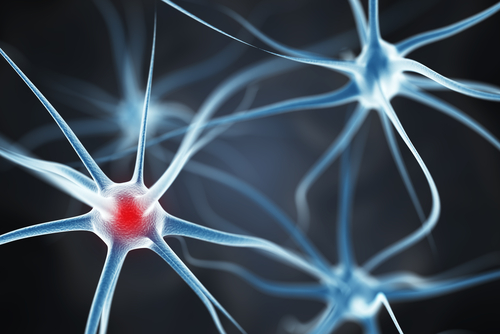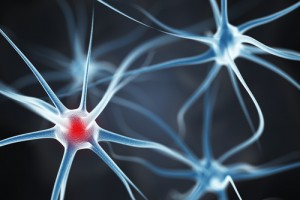Researchers Uncover New Insights Into Spinal, Bulbar Muscular Atrophy Stem Cell-derived Motor Neurons

 In a recent study entitled “Stem cell-derived motor neurons from spinal and bulbar muscular atrophy patients,” the authors characterized stem cells and motor neuron derivatives from patients with spinal and bulbar muscular atrophy. The study, which was published in the Neurobiology of Disease journal, contributes to continued research into the mechanisms of the disease, which still lacks FDA-approved therapies.
In a recent study entitled “Stem cell-derived motor neurons from spinal and bulbar muscular atrophy patients,” the authors characterized stem cells and motor neuron derivatives from patients with spinal and bulbar muscular atrophy. The study, which was published in the Neurobiology of Disease journal, contributes to continued research into the mechanisms of the disease, which still lacks FDA-approved therapies.
Spinal and bulbar muscular atrophy (also known as Kennedy disease) is a motor neuron disease affecting specialized nerve cells — motor neurons — that originate at the spinal cord and are responsible for controlling muscle movement. Therefore, patients affected by this disease, mainly males, exhibit muscle weakness and wasting (atrophy) that progress with time. The disease is caused by a mutation in the androgen receptor (Ar) gene. The mutation consists of the expansion of a DNA fragment termed a CAG triple repeat that in affected patients is repeated at least 38 times. In healthy individuals, the number of repeats is 36.
In this study, the authors used induced pluripotent stem cells (iPSC ) from fibroblasts removed from spinal and bulbar muscular atrophy (SBMA) patients and from healthy controls to understand the disease’s molecular mechanisms that are currently not fully understood. They observed that the CAG triple repeat expansion characteristic of SBMA patients were maintained in the stem cells derived from the fibroblasts, with occasional variation in the repeats’ length. Afterward, the authors used the iPSC lines and differentiated them into motor neurons. They found no differences in the motor neuron differentiation capacity between iPSC cells retrieved healthy donors and from SMBA patients, but the latter expressed reduced levels of androgen receptor. Their response to androgen treatment was still observed with androgen-dependent stabilization and nuclear translocation. Stem cell-derived motor neurons with the largest repeat expansions exhibited increased acetylated α-tubulin, but reduced levels of HDAC6, one of the major deacetylating enzymes, was observed in both shorter and larger repeat patients.
The authors suggest that further studies are required to understand several disease characteristics that were highlighted in their study and how these changes impact disease mechanisms.
[adrotate group=”3″]







